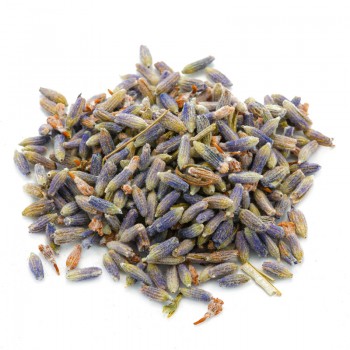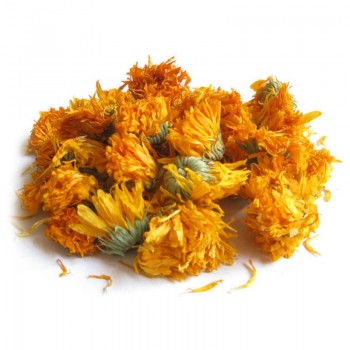The hybrid lavender flowers (sink) , in addition to their delicious scent, give several benefits for our well-being, which include the capacity to relieve stress and improve mood, reduce skin irritation, calm some inflammations, and soothe stomach swelling. In particular, infused lavender is known as a diuretic remedy and, traditionally, as an antiseptic for the urogenital tract. It has been used in herbal medicine, to oppose intestinal inflammation and cystitis.
Lavender infusion: properties and benefits
This Mediterranean flower, among its various health benefits, is famous for its diuretic and purifying properties for the urinary tract. The sink contributes to the well-being of the urogenital tract with the properties of a natural antiseptic, which fights the presence of bacteria in the urinary tract. Furthermore, the infusion of hybrid lavender flowers allows to obtain natural anti-inflammatory benefits, thanks to the polyphenols contained. The irritation of the genitourinary system can benefit from the soothing qualities of lavender, which purifies and can reduce burning. The infusion of flowers shows purifying qualities, thanks to the antioxidants that help eliminate toxins from the body; in addition, it enhances its benefits with the effect of increasing diuresis.
Linked to the diuretic effect, another advantage of the infusion of hybrid lavender is the reduction of abdominal swelling. Especially, when this swelling is due to water retention, or the overgrowth of bacteria in the intestinal tract. Having muscle relaxant properties, lavender is believed to be a mild sedative. It has been known for centuries as a plant that promotes relaxation, and the infusion of lavender flowers becomes an aromatherapy experience, able to calm nervousness, stress and anxiety. An evening infusion is recommended to promote sleep, since it acts on the nervous system through the substance of linalool, a component of lavender with soothing properties. Other components that are considered beneficial against moodiness and nervousness are camphor, linalyl acetate and terpineol-4 - with calming and mind-stimulating attributes. It is an infusion considered anti-neuralgic in herbal medicine, to alleviate headaches and promote muscle relaxation. In particular, it is recommended to soothe inflammations of the musculoskeletal system.
It is also used as an antispasmodic for those suffering from abdominal and muscle cramps during the menstrual cycle. It acts as an antispasmodic as well in treating digestive cramps and stomach irritation. However, lavender contains several antioxidants that are useful for keeping the digestive system healthy. It is known as a very good agent against respiratory ailments. This lavender flower infusion helps during a cold, and becomes a natural support against inflammation. By inhaling the fumes of the herbal tea well , it relieves cough and helps to provide relief in case of bronchitis, laryngitis, and respiratory system congestion. This effect is due to the expectorant values of the lavender, and to the contrast to the germs that cause respiratory problems. Promotes the expulsion of mucus and phlegm from the chest, and in the nasal passages that cause cough and congestion. Hybrid lavender can also be used with external skin wellbeing packs , so as to reduce scars and acne marks on the skin.
Origins and History of cultivation
This herbal tea features the worlds flowers of Hybrid Lavender, a natural cross between two lavender varieties, which appeared in the Mediterranean area in the 20th century. A hybrid that seems to have evolved naturally near the maritime areas in Spain, Italy and France, around the 1930s. Lavender growers noticed that some shoots grew more vigorous and abundant than others. If they were initially called upper lavender sprouts, later it turned out that it was a hybrid created by pollinating insects, such as bees. It was also called "sink".
This type of lavender is particularly known for the production of essential oil, which yields up to 10 times more than classic lavender. Its powerful scent, with a herbal and camphor undertone, is often used in cosmetics. Hybrid lavender oil is used as a fragrance in the formulation of soaps, body lotions, massage oils, candles and other scented products. Despite this “hybrid” derivation, lavender has been known since ancient times and the Bible speaks of its perfume, with the name of Nardo - the city of Naarda in Syria from which it was believed to originate. Over the centuries, the Greek and Roman culture usedlavender for cleansing and aromatic purposes. Furthermore, in the Roman baths it was used for therapeutic purposes, and to create perfumed water in thermal baths. Its natural antibacterial capacity made it a detergent for the domus, and it was defined in Latin "lavender", from its washing function.
The domestic use of deodorant and detergent has remained over the centuries and is still used today as an aroma for detergents, in precious lavender perfumes and in small bags for storing linen. The aspect linked to phytotherapy, even if minor, has been enhanced through the infusions of lavender flowers and ointments. The Egyptians used it in ointments for embalming or to flavor the oil of oil lamps, while in the Middle Ages it was considered useful for driving away witches with its power. In recent centuries, lavender has been used in aromatherapy as a calming and sedative to promote sleep, and for digestive well-being. As an external ointment or lotion, to soothe wounds and acne. The active ingredients derive from the flowering tops, collected after flowering, when the plant is denser in aromatic substances.
Plant and flowers
The herbal tea collects worlds flowers from the so-called "Sink". Lavender, in fact, has several varieties, and the one used here is Lavandula hybrida, which is always part of the Lavandula genus and the Lamiaceae family. It is a natural hybrid between two other species: Lavender spica (Lavandula latifolia Med.) And Lavandula angustifolia. Hybrid lavender, also known as Lavandula x intermedia, is widespread in Italy and has a camphor-like aroma. Like classic lavender, it is an evergreen aromatic shrub, larger than true lavender. Its shrub grows to almost 1 meter in height, with green leaves and purple-blue flowers.
The whole plant is covered with oil glands, and generally the essential oil is extracted by steam distillation of the stems and flowers of the plant. The manual sorting of the various parts is useful to make the product pure, as in the case of clean flowers, which allow a natural and effective formulation of the herbal tea.
Nutritional values of the hybrid lavender infusion
The active ingredients of hybrid lavender are various, including mainly linalool, lavender, and some substances such as cineole and camphor. Contains less linalyl acetate than lavender, but higher amounts of camphor. Other antioxidant benefits are sesquiterpenes, geraniol, limonene, coumarins and saponins.
How to use flowers in hybrid lavender tea
The infusion is obtained by putting in a cup (250 ml), about 3-5 grams of the hybrid lavender flowers with water at 100 ° C. Leave to infuse for 5 to 7 minutes, before drinking the diuretic and relaxing herbal tea. Add honey or sugar if desired.
Lavender infusion: side effects and contraindications
This lavender herbal tea brings benefits, but it is necessary to respect the recommended doses and not to exceed it for too long periods. Excessive lavender intake can cause constipation, loss of appetite and headaches. Lavender has a sedative effect which may interfere with other medicines. Therefore, it is advisable to inquire with a specialist in case of taking tranquilizing drugs. For its calming effects, the infusion is recommended to be taken before going to sleep. It is not suitable for people suffering from seizures. It is not recommended for children, pregnant or breastfeeding women.











 No reward points for this product.
No reward points for this product.





